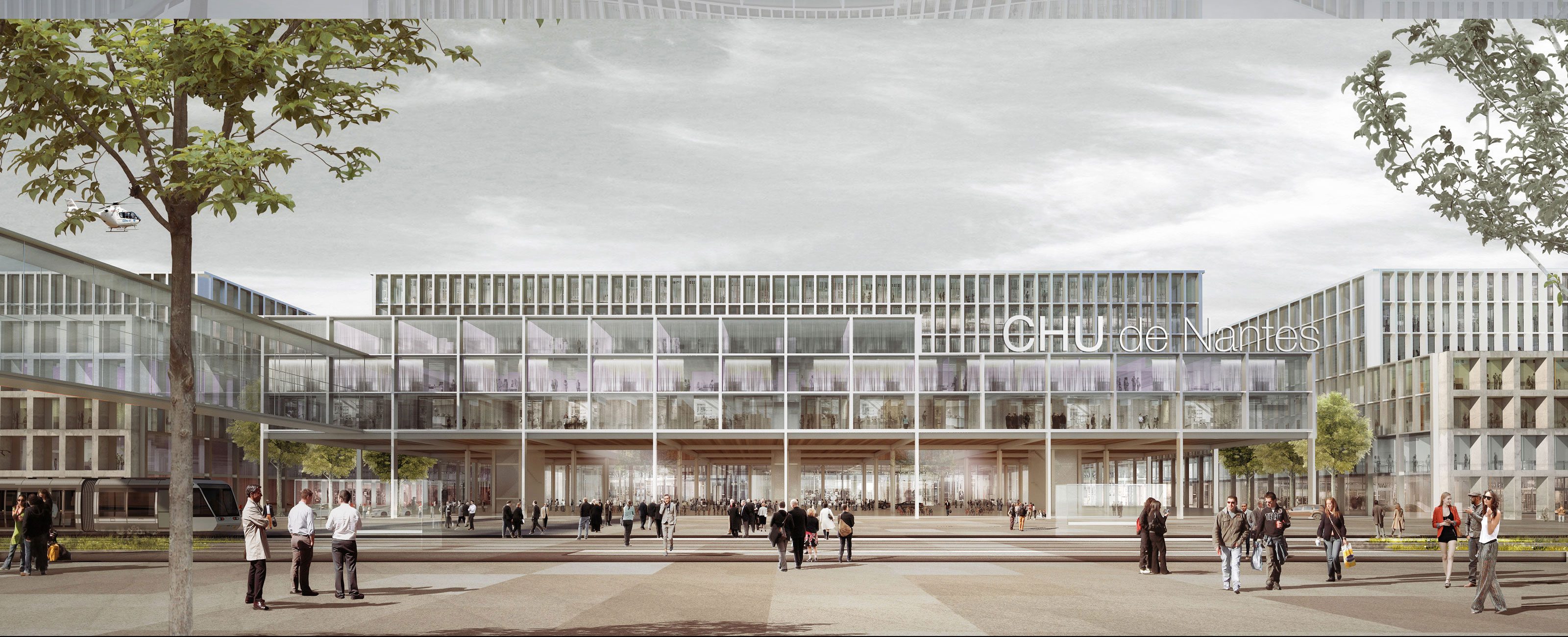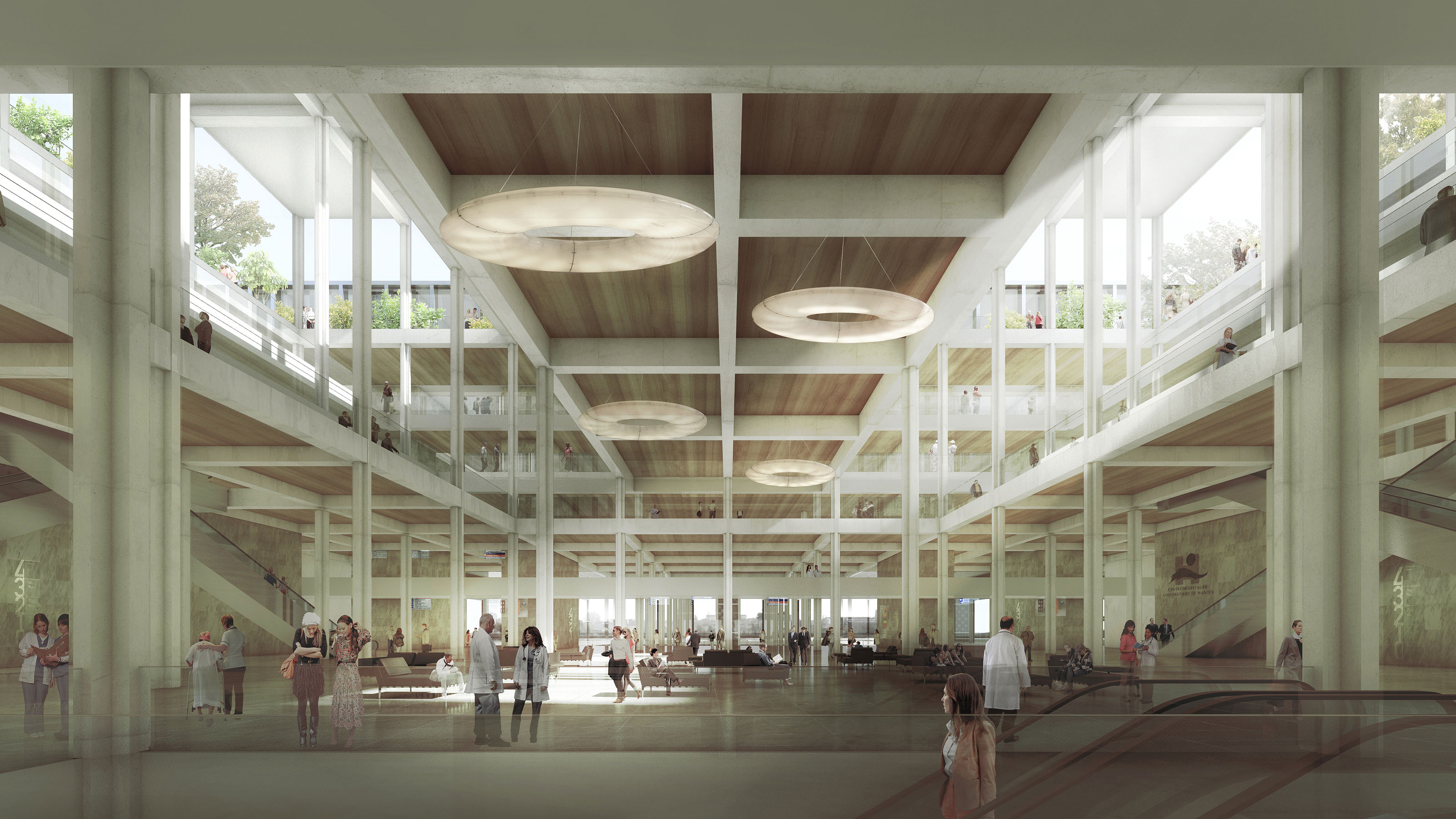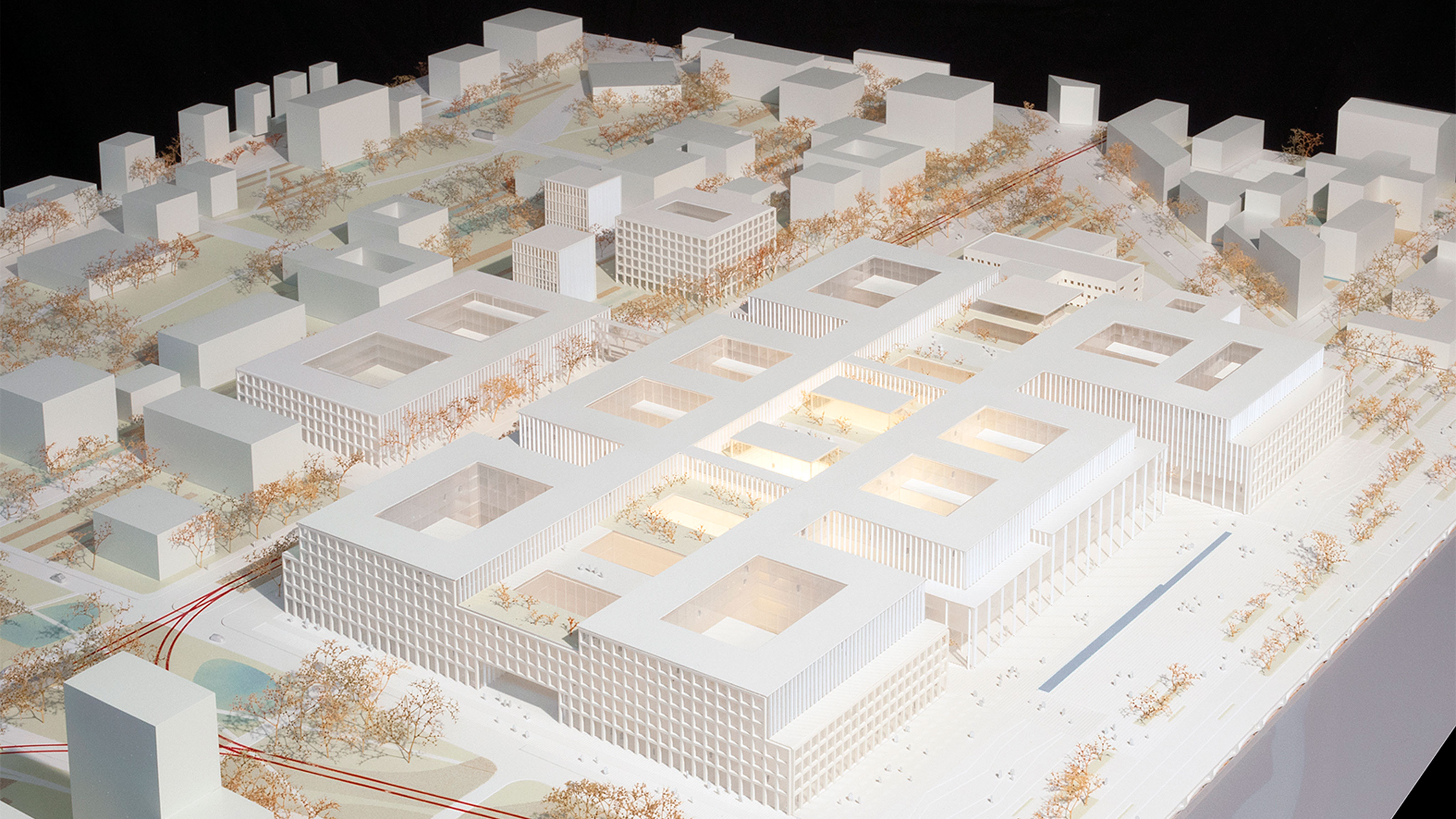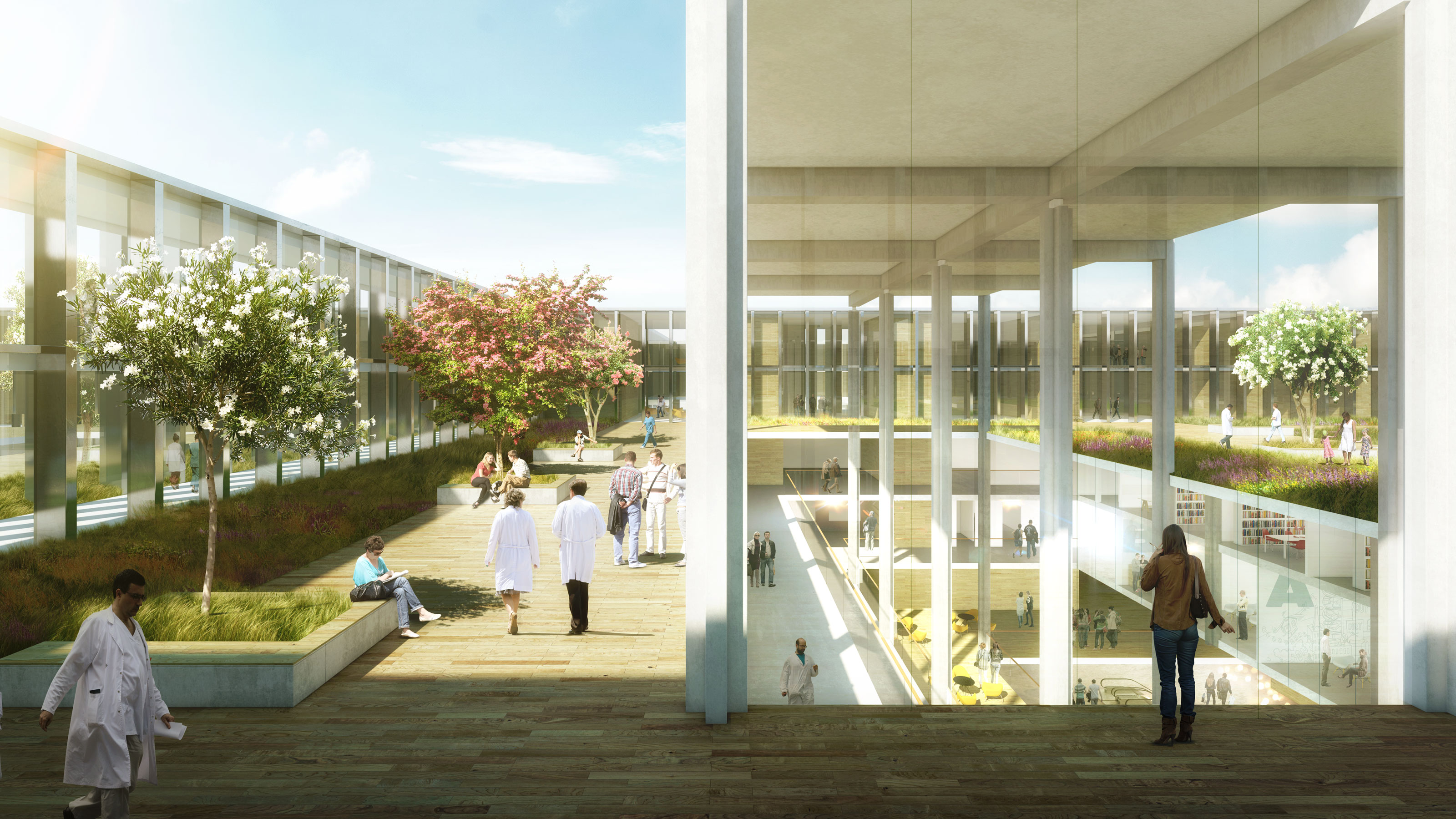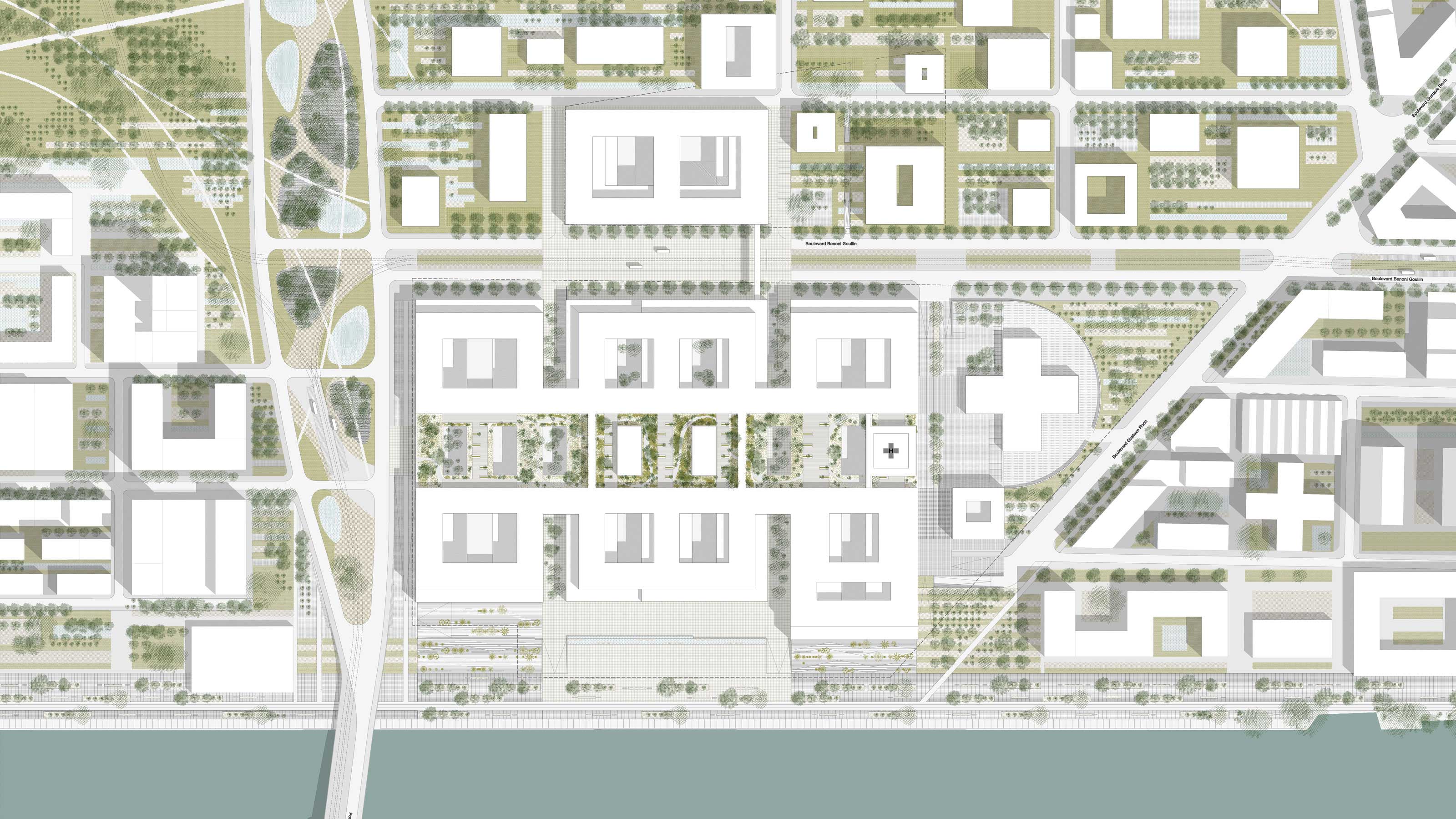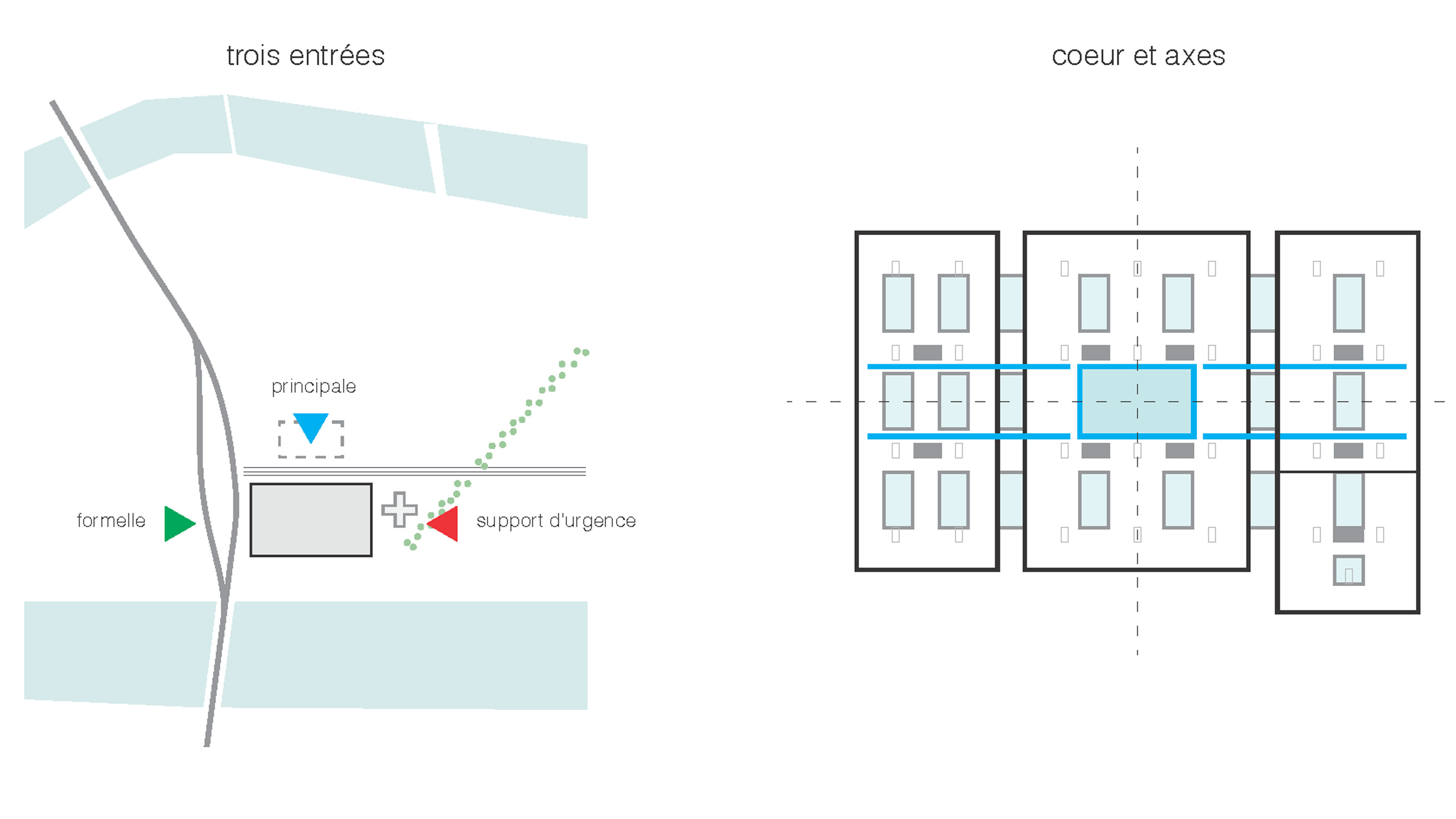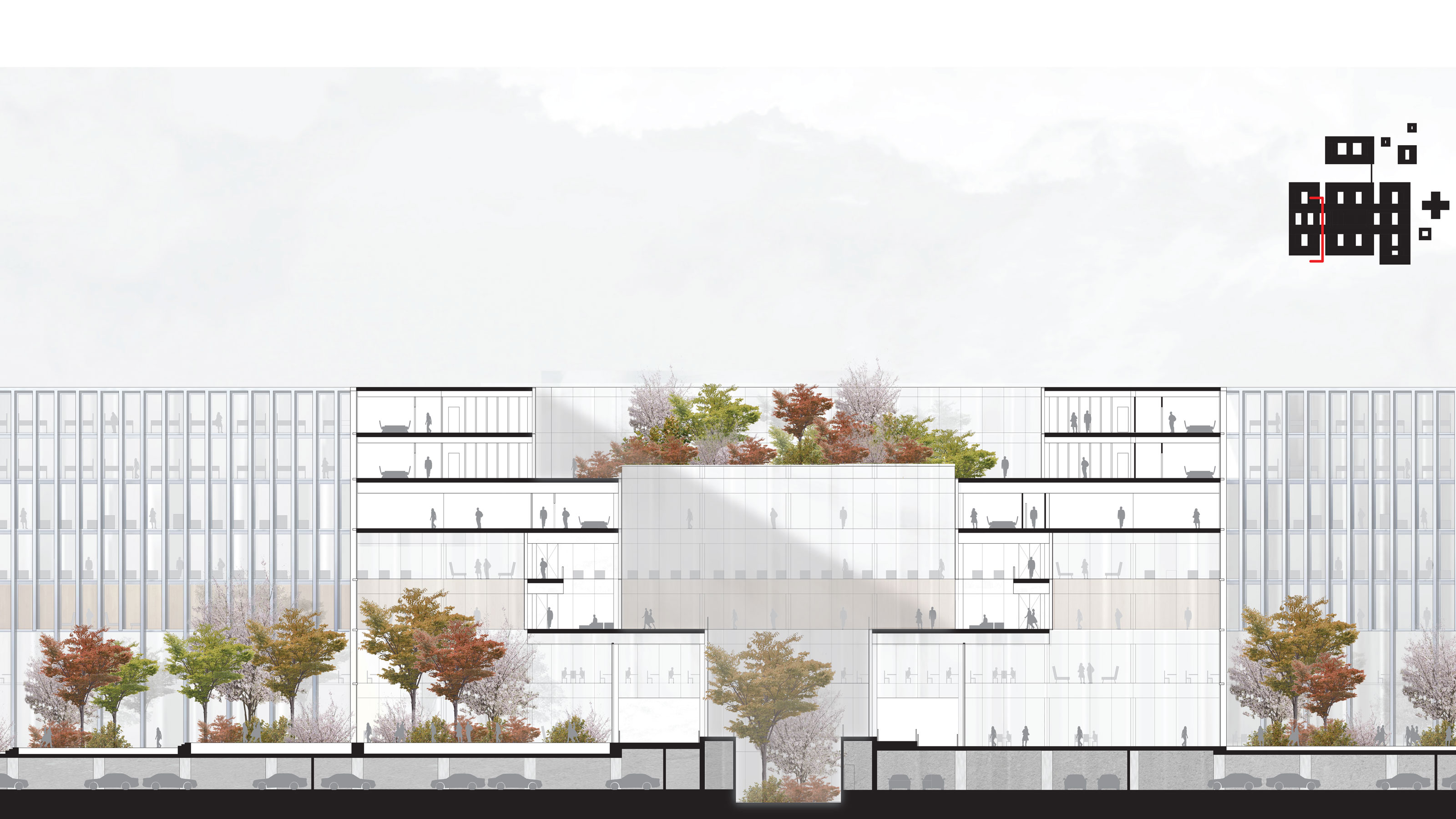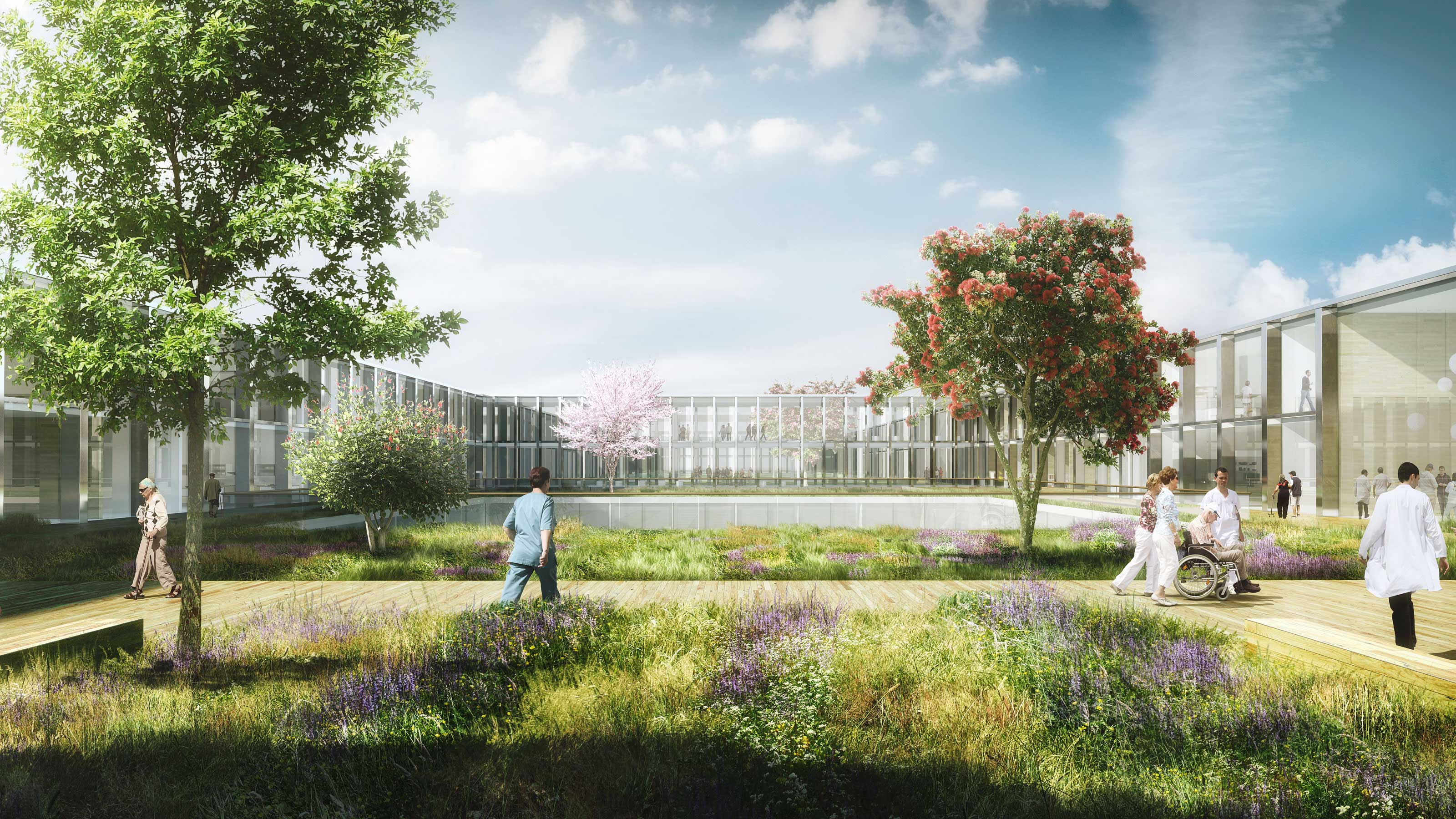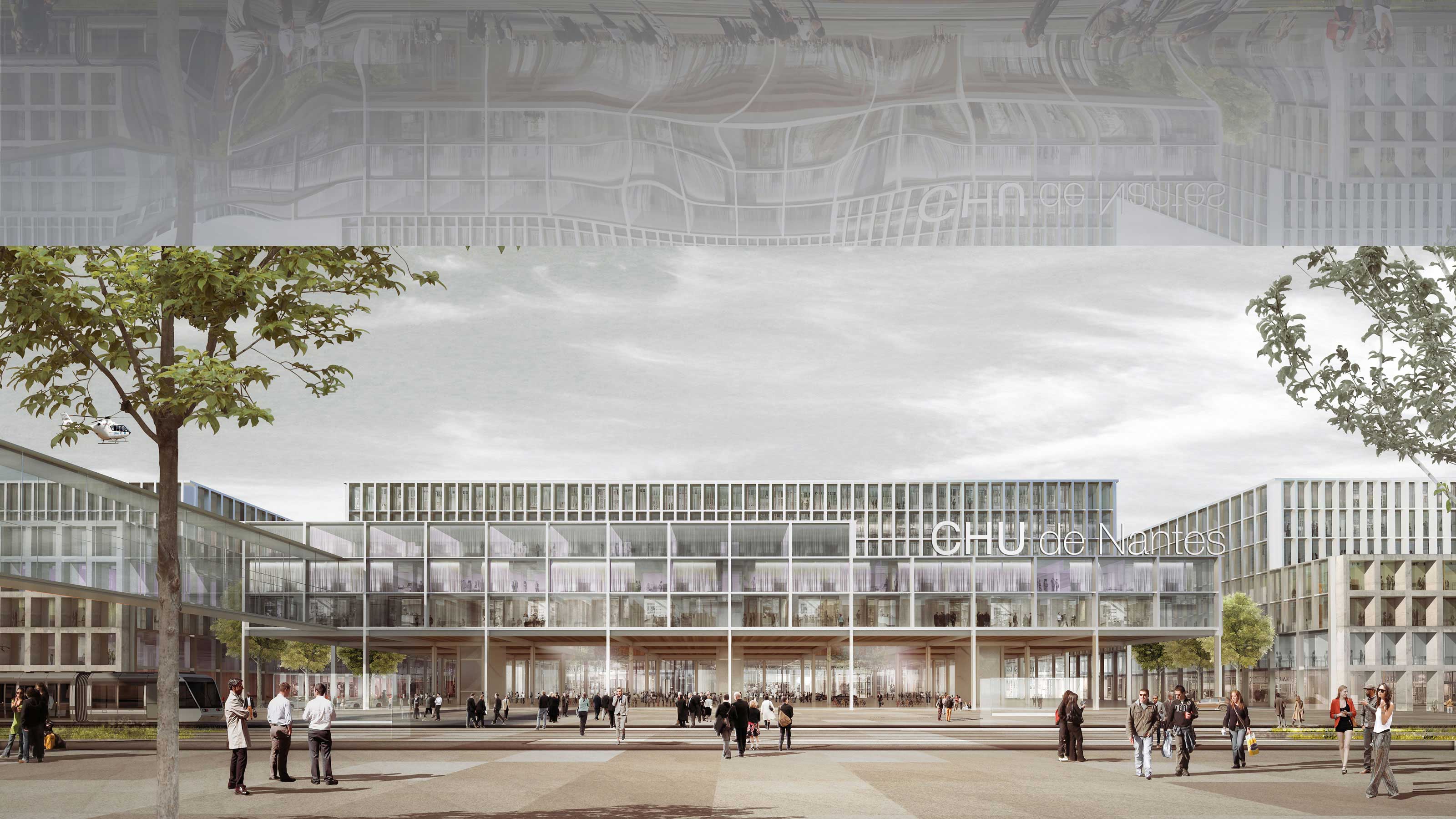Centre Hospitalier Universitaire, Nantes (France)
The metropolitan Hospital of the Future
The city of Nantes contains a number of different healthcare facilities spread over the city. The client, Centre Hospitalier Universitaire of Nantes, wants to relocate them all together in the center of the urban development of Île de Nantes alongside the Loire river. Merging these different healthcare facilities will result in one of the biggest hospitals in Europe with a total of 290.000 sqm.
The building for this new hospital should be a highly progressive one and should seamlessly anticipate to reallocation, reuse, reconfiguration, readjustment and to be extensible in the future, as envisioned by the client.
This vision motivated the client to search for Europe’s best practices. In the last decade new Dutch hospitals have set many new standards using innovative design concepts for patient-centered care, flexibility, front-back office outpatient departments, healing environment and much more. Influential recent hospital projects by EGM architecten, like the Erasmus University Medical Center and Jeroen Bosch Ziekenhuis, are visited by hospital professionals worldwide. For this reason EGM architecten was selected to make a design for the CHU in Nantes. EGM architecten designed the new hospital in cooperation with KAAN architecten from Rotterdam and Pranlas-Descours Architect & Associates from Paris.
The hospital of the future needs a new design approach for the challenges healthcare faces today. We believe this hospital is in need of a smart system that can function and evolve continuously. It must be designed in such a way the building can function as a platform which allows it to be used in multiple ways. This is a necessity to keep up with the ongoing medical evolutions. Modularity is a vital ingredient for success: a modular design can be used as a framework that allows an evolution of processes. This approach assures that the change of ‘software’ of medical processes over time is not limited by the ‘hardware’ of the building. Raising the capacity of the hospital without expanding the building is essential to the concept of our design.
We believe the design of the hospital of the future should be based on modularity of building parts, construction, logistics, functional groups, rooms and more. In total this creates a system that allows a continuous evolution of connectivity, collaboration and workflows, not only for the hospital itself but also in relation to the medical campus its part of. Collaboration is the guiding principle for the future of healthcare and will result in simple and understandable buildings. This allows the hospital of the future to focus on using all of its resources to create an integral approach for the needs of the patients. The hospital of the future is a patient driven hospital.
Our design proposal for the new CHU is based on a modular system, implemented in all elements of the hospital. The division of the hospital into the Elective-, Science- and Acute Hospital creates a clear and user-friendly environment for public, personnel and urgency. This keeps different flows within the hospital separated which highly benefits the efficiency. The internal routing of the hospital is guided by different structural elements; the use of axes, logistic cores, modular units and patios together all create a smart and comprehensive building for both public and personnel, as for logistics flows. Higher quality standards and efficiency can be achieved with this transparent and Lean system, driven by demand.
Collaborators
KAAN architecten, Pranlas-Descours Architect & Associates
